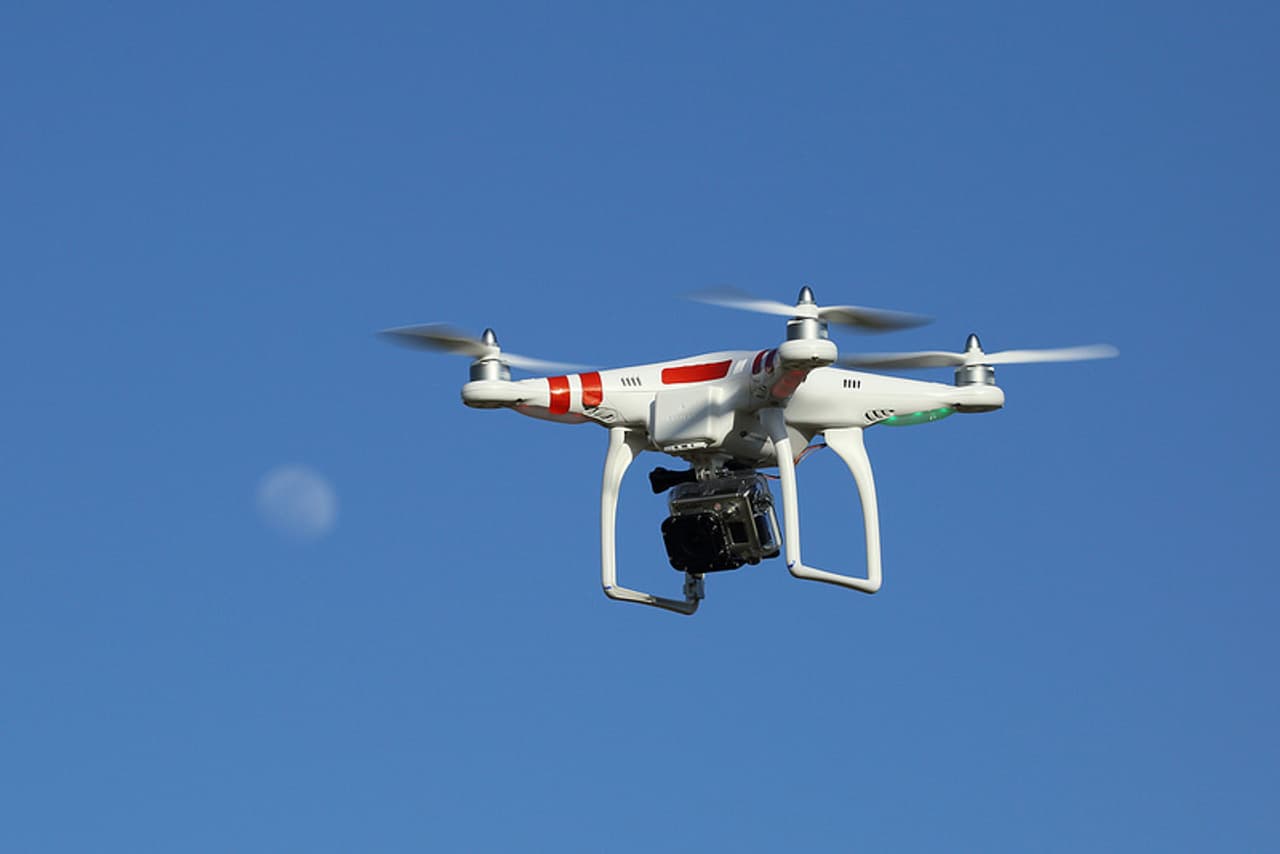
Podcast: California dreaming of new drone uses – even to paint graffiti
Drone and Moon – Don McCullough/Flickr
Military, government and private sector funding is flowing into drone innovation hubs in California, Owen Bennett-Jones found in the Bureau’s latest podcast from Los Angeles – with one artist even wanting drones to paint graffiti on buildings.
The military has often drawn on experiments done in civilian settings to develop its technology. The precursor to the Predator, the Albatross, was first developed out of a garage in the LA suburbs by Israeli engineer Abraham Karem.
Bennett-Jones met two of today’s innovators in a special edition of Drone News broadcast from Los Angeles. Nora Ayanian, who is the director of a robot coordination lab at the University of Southern California, is mostly funded by the government.
Ayanian is looking at some of the challenges involved in making large groups of robots move together.
“You have big collective groups of robots who want them to do some task together like surveillance or monitoring so you design controllers and coordination schemes to enable them to actually do these things in scale” she said.
“In order to figure out how 20 robots are not going to bump in to each other you need to do a lot of math.”
Many of her projects have the potential for both civilian and military use.
“A lot of the things we work on particularly in my lab have applications in both,” she explained. “For example you can use a group of drones to do surveillance on people, but you can also use that same algorithm to do environmental monitoring or to do monitoring (of) crops.”
One of the biggest limitations on drones, Ayanian says, is keeping the machines charged while they’re out doing their tasks.
“One of the projects we’re working on is how can we actually deliver power and other resources to robots that are out working in the field doing something really important, when we don’t wan them to have a lot of downtime.”
The project looks at using “smaller faster robots to deliver batteries to robots that are out doing something important”.
Bennett-Jones also met Emerick Varga, an entrepreneur who has already raised $75,000 to do drone development while doing his masters on electrical engineering and control systems.
Varga believes there is a large market of civilian drone users, and set out to develop customised products for their niche requirements.
“We had people coming to us for all kinds of wild, out-there ideas,” he said.
“We had one street artist that wanted us to create a drone that would fly to the side of the building and spray-paint his logo to places that he wouldn’t otherwise be able to get to.
“We’ve had people from emergency services come to us and say ‘hey, we need a drone that will fly in front of our ambulance and clear an intersection before we get there.’
“We’ve also had people from Minnesota saying ‘we need you to fly food bait and beer to ice fishermen out in these holes because it’s way too dangerous for me to want to take my truck out there, and I’m not walking out in the cold.’”
He realised that what was needed was the software to enable all these different functions which, like an Android operating system working on different smartphones, could be used on different drones. This is what he is working on now, and hopes to launch in a few months.
“Hopefully I’m not going to have to get a real job after this” he said.
Follow our drones team Owen Bennett-Jones, Abigail Fielding-Smith and Jack Serle on Twitter.
Sign up for monthly updates from the Bureau’s Covert War project, subscribe to our podcast Drone News, and follow Drone Reads on Twitter to see what our team is reading.


